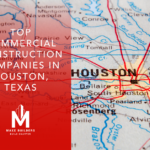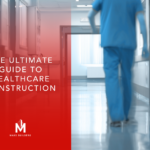Where you decide to build your structure has significant implications on a project’s price. In assessing where you want to build your facility and how much it will cost, it’s important to consider the following items:
Basic Information: These are simple questions about the site and its physical characteristics that other important site selections or due process information depend on.
1. Who has jurisdiction over the site?
If the site is located within city limits, important regulations such as zoning are determined by a city government. If not, they are defined by a county government. This is important to know early so you know who to contact to get information about these regulations.
2. What is the size of the site and where are its boundaries?
The overall size of the site and the length of the property line against the street are important to consider in making sure that the site is compatible with the goals of your structure.
3. What are the site’s soil conditions?
The soil must be investigated to determine its bearing strength, whether or not it is suitable to build on, and overall compatibility with the project. If the soil is not capable of withstanding the building’s load, you may have to replace it or install special foundation improvements, which can be very costly. Furthermore, some soils expand when they come into contact with water, which can cause cracking in the building’s foundation. Before purchasing a property, it is vital to understand the soil and its implications.
4. Does an analysis of the site’s history suggest potential soil contamination?
This is determined through a procedure known as:
“Phase 1 Environmental” in which a contractor or engineer investigates the site’s history and determines if there is a risk of past contamination. If the potential for contamination is identified from this review of the site and the surrounding area’s history, a “Phase 2 Environmental” is conducted. In the second phase, the soil is actually tested for contamination to verify that contamination does not exist.
5. How flat is the site?
If the site is located on a steep slope, building on it will necessitate much more groundwork and construction expenses than it would otherwise. This requires additional time and increased expenses.
6. Are there any natural resources or environmental characteristics on the site that could prevent building there or add to expenses?
If the site is home to endangered species or protected biomes (see Zoning/Legal Information), you may not be able to build there. Even if a certain environment is not protected by law, it can create difficulties and add expenses to a construction project. For example, an unpreserved wetland will have to be drained before it can be built on, which would be a pretty expensive ordeal.
Furthermore, if the site has a high density of trees, building on it will, at the very least, mandate the removal of quite a few trees. In addition to the cost incurred from simply removing the trees, there also might be local regulations that impose fees for the removal of trees (see Zoning/Legal Information)



